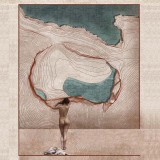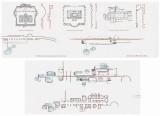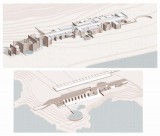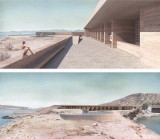Supervisor:
2023
In the context of the ever-increasing thermal spa tourism in Greece, the need for the utilization and modernization of the spa facilities and the imprint of the building infrastructure on the natural landscape, this thesis proposes the re-utilization of the thermal springs of Lake Vouliagmeni with the creation of new spa facilities and the redesign of the surrounding area so that the entire infrastructure offers an integrated spatial experience to the bathers and the utilization of the lake as a whole.
The thermal properties of the lake, its special natural beauty and its geographical location attract thousands of visitors. It is the nearest thermal spring in Attica and a rare geological phenomenon. In contrast to the existing facilities and the countless alterations that the surrounding area has suffered over the years within the lake, the new proposal seeks to heal and restore spatially, through the buildings and the redesign of the surrounding area, the commercial and tourist encroachment on the natural landscape. The new buildings, influenced by the Greek landscape, the holiday lifestyle on the islands and the morphology and formation of the lake as a geological phenomenon, function as an extension of the natural landscape, discreetly serving the needs of visitors.
The architectural proposal has as its main axis the creation of a continuous movement from the waterfront on the outside of the lake to the inside of the lake through two separate building volumes connected by an underground passage. It attempts to conceptually unite on a first level two different spatial qualities, the enclosed and introverted inside the lake with the opening to the landscape and the extrovertedness offered by the waterfront. This design move on a practical level aims to connect the different water qualities, the thermal water in the interior with the seawater on the coastal front offering an integrated spatial bathing experience to the visitor.







